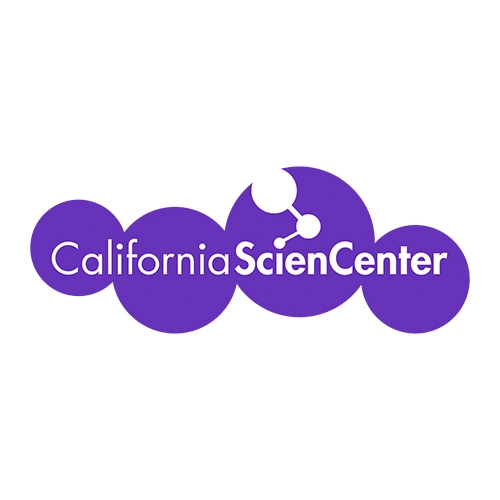
HOW TO USE HIGHWAY RADAR EFFECTIVELY?
Highway Radar
Highway radar is a useful tool for keeping an eye on and controlling traffic on highways. To plan effective traffic control and safety measures, it enables authorities to collect real-time data on characteristics such as traffic volume, vehicle speeds, and other parameters. Understanding how to use highway radar properly is crucial if you want to take full advantage of its capabilities. The fundamental elements of employing highway radar to maximize its advantages will be covered in this blog post.
Choosing the Right Highway Radar System
For a highway radar system to be used effectively, it is essential to choose the proper one. When selecting a radar system, take into account the following elements:
1. Range and Coverage: Examine the radar system’s range and coverage area to make sure it can successfully monitor the targeted section of the highway.
2. Accuracy and Precision: To ensure accurate data collection, look for radar systems with excellent accuracy and precision in speed detection.
3. Data Integration: For smooth data sharing and analysis, think of radar systems that can connect to current traffic management systems or data collection platforms.
4. Environmental Factors: Take into account variables in the environment that could affect radar performance, such as weather, temperature, and possible obstructions.
Installing and Positioning Radar Units
For optimum performance, radar devices must be installed and positioned correctly. Follow these guidelines:
1. Height and Angle: Position the radar units so that there is a clear line of sight for precise speed detection.
2. Distance from the Road: Place the radar units far enough from the road to prevent interference from passing cars or other objects close to the highway.
3. Calibration and Testing: The radar devices should be calibrated and tested regularly to preserve accuracy and guarantee trustworthy data collection.
Data Collection and Analysis
Effective data collection and analysis are essential after the radar system has been installed. Please take into account:
1. Data Recording: Ensure that the radar system is configured to capture precise and reliable data, such as vehicle speeds, traffic volumes, and other pertinent factors.
2. Data Integration: Combine radar data with that from other traffic management platforms or systems for thorough analysis and decision-making.
3. Real-Time Monitoring: Utilize the radar system’s real-time monitoring capabilities to monitor traffic flow and make prompt adjustments to manage it or respond to emergencies.
4. Data Interpretation: Examine the gathered data to find patterns, trends, and areas that warrant further investigation. This will make it easier to employ focused traffic control tactics.
Maintenance and Upkeep
The highway radar system’s long-term efficacy depends on routine maintenance and upkeep:
1. Regular Inspections: Perform regular examinations of radar equipment to spot any physical harm or prospective problems that might impair their function.
2. Cleaning and Calibration: Radar equipment should be cleaned frequently to avoid obstruction from debris or dirt. To preserve accuracy, calibrate the devices regularly.
3. Software Upgrades: To take advantage of performance improvements or problem fixes, keep up with the most recent firmware or software upgrades offered by the maker of the radar system.
4. System Checks: Conduct routine system checks to guarantee the proper operation of all parts, including the power supply, communication, and data storage.
Data Utilization and Decision-Making
The information gathered by highway radar systems can be a helpful resource for decision-making and traffic management plans. Authorities can create efficient traffic flow plans, optimize lane arrangements, and put dynamic speed limits in place to increase traffic efficiency by analyzing traffic patterns, peak hours, and congestion hotspots. In addition, the information can be used to pinpoint high-risk zones that are prone to collisions or speeding infractions, leading to more focused enforcement actions and safety improvements like better signs, rumble strips, or added barriers.
Traffic Incident Management
In managing traffic incidents, highway radar is essential. The ability to monitor events in real-time enables authorities to quickly identify situations like collisions, failures, or traffic dangers. Operators can immediately identify events and send out the proper emergency response teams by analyzing changes in traffic flow patterns, abrupt speed reductions, or abnormalities in vehicle movement. This proactive approach reduces subsequent accidents, reaction times, and the impact of incidents on highway operations.
Enhancing Road Safety
The efficient use of highway radar dramatically improves traffic safety. Radar systems help enforce speed restrictions by continuously monitoring vehicle speeds, ensuring that drivers follow the established limits for increased safety. Additionally, by identifying places with persistently high speeds using the collected data, authorities can put in place targeted measures like speed cameras, more signs, or traffic calming strategies like speed bumps or roundabouts.
Traffic Planning and Infrastructure Development
Highway radar system data offer important insights into traffic patterns, levels of congestion, and traffic flow characteristics. Planning for traffic and the construction of infrastructure both benefit from this information. It assists authorities in locating regions with high traffic volumes, determining whether more lanes or detours are necessary, and making judgments about the development or expansion of highways. Authorities may ensure that highways are developed and built to satisfy the needs of the expanding population and optimize traffic flow by coordinating infrastructure construction with accurate traffic statistics.
Conclusion
Highway radar systems are effective tools that offer real-time information for traffic monitoring, incident management, and improvements to road safety. Authorities can efficiently use highway radar if they select the suitable system, ensure proper installation and location, collect and analyze data effectively, and undertake routine maintenance. Highways become safer and more effective when data is used for informed decision-making, proactive incident management, and targeted traffic control strategies. This benefits both commuters and transportation authorities. To optimize traffic flow, increase road safety, and improve the entire highway experience, highway radar must be used effectively.
FAQ’s
Q1. How does highway radar work?
Ans: Highway radar works by emitting radio waves that bounce off objects like vehicles. The radar measures the time it takes for the waves to return, calculating the object’s speed and distance.
Q2. How does radar detect distance?
Ans: Radar detects distance by measuring the time it takes for radio waves to travel to an object and bounce back. The distance is determined using the speed of light and the time delay of the reflected signal.
Q3. How accurate is radar speed detection?
Ans: Radar speed detection is highly accurate, typically within 1-2 mph (2-3 km/h) of the actual speed. Calibration and proper operation are crucial for accuracy.
Q4. What determines the maximum distance a radar can see?
Ans: The maximum distance a radar can see depends on its power, antenna design, and the size of the target. Factors like atmospheric conditions and terrain can also affect the range.
Q5. Does radar detect direction?
Ans: Radar can detect direction by using multiple antennas or phased-array techniques to determine the angle from which the radar signal is reflected.
Q6. Does rain affect speed radar?
Ans: Rain can affect speed radar as the raindrops can scatter radar waves and cause interference. However, modern radar systems are designed to mitigate this effect to maintain accuracy.
Q7. Does temperature affect radar?
Ans: Temperature generally doesn’t affect radar performance, but extreme temperature variations can impact the radar’s electronics and materials over time, potentially affecting its long-term reliability.





















